ROOM: The Space magazine is one of the leading magazines on space exploration, technology and industry. At ROOM, we share a common objective – promotion of peaceful space exploration for the benefit of humankind, all while bringing you throughly researched articles on an assortment,a range of trending topics. Our authors include researchers and industry leaders from all over the world, which lets us bring you the newest and detailed information about exoplanet nasa kepler.
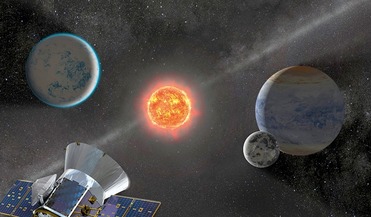 April 2019
Scanning the skies for exoplanets
April 2019
Scanning the skies for exoplanets
... still remains at large. With thousands more worlds left to uncover, NASA has already dispatched a replacement to carry on where Kepler left off. Launched in April 2018, the Transiting Exoplanet Survey Satellite (TESS) is designed to search for planets in the...
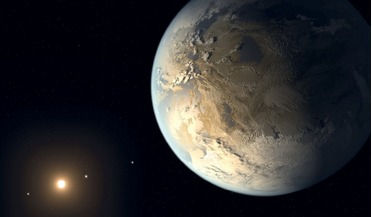 August 2018
Exoplanet census promises radical discoveries
August 2018
Exoplanet census promises radical discoveries
... four-day orbit to the remarkable discoveries of NASA’s Kepler space telescope, progress has been rapid and surprising. The vast majority of the more than 3,700 known exoplanets are unlike any of the planets in our... brightness of the source star, shown in the top panel. WFIRST Exoplanet Microlensing Survey In Figure 1 we compare the region of orbital sensitivity of NASA’s Kepler mission and WFIRST to the orbits of planets in our solar system....
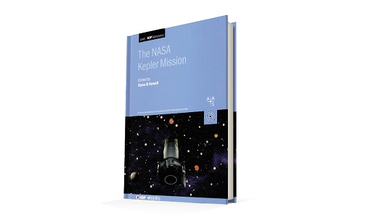 22 June 2021
The NASA Kepler Mission
22 June 2021
The NASA Kepler Mission
While everyone has heard of the Hubble Space Telescope (HST), relatively few will be familiar with NASA’s Kepler mission, let alone the follow-on K2 mission performed by the same satellite. The authors of this ... spacecraft using solar pressure”) is a case in point. Regarding the results, there are significant sections on exoplanets and stellar astrophysics with shorter sections on the solar system and extragalactic studies. Each chapter concludes...
 January 2023
Private space stations and NASA’s effort to re-invent itself
January 2023
Private space stations and NASA’s effort to re-invent itself
... lifetime ended up being more than twice its original design-life (32 years rather than 15). However, the NASA of the 2020s is clearly intent on reinventing itself. Today, it is no longer developing ‘technical specifications’ in-... it is producing ‘performance specifications’ from which private space companies develop competitive designs that NASA selects after a detailed review. This article explores the status of planning and implementation for...
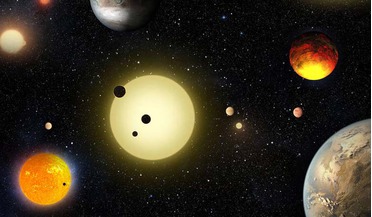 11 May 2016
Kepler scientists announce a major increase in confirmed exoplanet numbers
11 May 2016
Kepler scientists announce a major increase in confirmed exoplanet numbers
..., 24hrs a day, 7 days a week, 365 days a year looking for the tell-tale sign of a would be exoplanet. The technique Kepler uses is known as the transit method and it works by measuring the dip in star light as a planet passes.... The light and dark green shaded regions indicate the conservative and optimistic habitable zone. Credits: NASA Ames/N. Batalha and W. Stenzel Despite announcing the single largest finding of planets to date, it has not all...
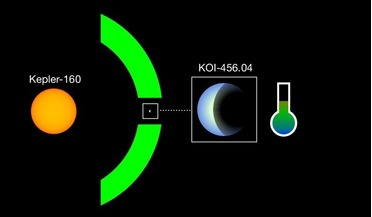 05 June 2020
Exciting exoplanet find around sun-like star
05 June 2020
Exciting exoplanet find around sun-like star
... worlds, detections of rocky worlds around Sun-like stars is comparatively rare, due to the techniques used to find exoplanets. But by improving on an old detection method, a team of German and US scientists have now found a ... not new. It was discovered around ten years ago, followed by the confirmation of two exoplanets, called Kepler-160b and Kepler-160c, four years later. Both of these planets though are substantially bigger than Earth and...
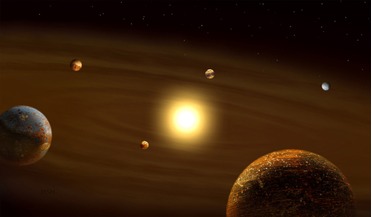 27 July 2019
Hundreds of new planet candidates detected by Kepler
27 July 2019
Hundreds of new planet candidates detected by Kepler
...is, TESS is not the only one making substantial discoveries. Although now officially retired, NASA’s first formidable exoplanet telescope – Kepler – has gone one better. Make that a few hundred better. By scanning through...title – K2 – and 15 months after being reassigned to its new stellar target, Kepler had racked up its 1,000th confirmed exoplanet discovery. Kepler’s K2 mission comprised of 19 ‘campaigns,’ lasting around 80 days each. These new ...
 November 2018
How many people does it take to colonise an exoplanet?
November 2018
How many people does it take to colonise an exoplanet?
.... Located at 4.2 light years (40,000 billion km), Proxima Centauri b is almost an ideal destination - as far as exoplanets go. But while this distance may be small by astronomical standards, it remains utterly vast on the human scale. The... evolution of black holes. He has been selected to lead observations of galaxies for a forthcoming NASA satellite called IXPE (Imaging X-ray Polarimetry Explorer, to be launched in 2021). The HERITAGE project...
 22 February 2017
NASA announces the discovery of first-ever exoplanet system with seven Earth-size planets
22 February 2017
NASA announces the discovery of first-ever exoplanet system with seven Earth-size planets
... the so-called Goldilocks zone – part of the system most likely to host planets with liquid water. The exoplanet system, named after the Transiting Planets and Planetesimals Small Telescope (TRAPPIST) in Chile, is located in the ... of the system are sure to reveal more secrets.” NASA will use its James Webb Space Telescope, launching in 2018, for further research of the TRAPPIST-1 exoplanet system. Webb will enable the research team to detect...